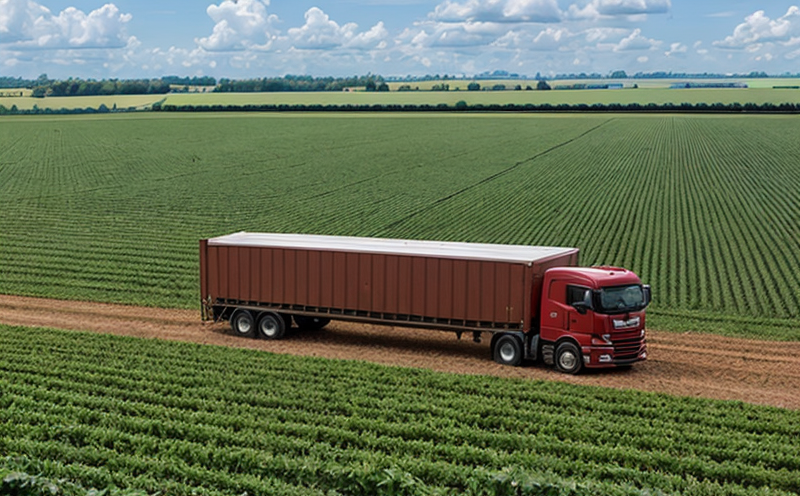Abrasion Resistance Testing of Packaging Surfaces
The abrasion resistance testing of packaging surfaces is a critical component in ensuring the longevity and effectiveness of protective materials used in agriculture and forestry. This test evaluates how well the packaging can withstand mechanical wear and tear during transport, handling, and storage conditions. Understanding the abrasion resistance properties is essential for maintaining product integrity and safety throughout supply chains.
In the agricultural sector, where goods such as seeds, fertilizers, and harvested produce are often subject to rough handling, robust packaging materials are necessary to prevent damage that could affect quality or functionality. Similarly, in forestry, packages containing wood products or processed timber may encounter abrasive surfaces during transport, which can compromise their integrity.
The abrasion resistance test typically involves exposing the packaging material to a controlled sanding process or rubbing it against a rough surface under specified conditions. The apparatus used includes a specialized machine that simulates real-world abrasion scenarios. This helps determine if the packaging will hold up during transport and handling, thereby ensuring product integrity.
The acceptance criteria for this test are based on international standards such as ISO 12947-1:2018 and ASTM D3359-16. Compliance with these standards ensures that the testing methodology is robust and universally accepted within the industry. The results of these tests provide critical insights into material durability, which can inform decisions about material selection and packaging design.
- Customer Impact: Improved product integrity leads to reduced spoilage rates and lower operational costs for transportation and storage.
- Satisfaction: Enhanced customer trust in the quality of the packaging materials used by agricultural and forestry businesses.
Benefits
The benefits of abrasion resistance testing extend beyond just protecting products during transport. By ensuring that packaging can withstand abrasive conditions, businesses in agriculture and forestry can enhance their operational efficiency, reduce waste, and improve overall product quality.
Effective abrasion-resistant packaging ensures that agricultural goods remain intact throughout the supply chain, reducing the risk of contamination or damage. This not only protects the products themselves but also enhances brand reputation by maintaining consistent quality standards. Furthermore, robust packaging can lead to longer shelf life for perishable items like fruits and vegetables, which is crucial in global trade.
From a logistical perspective, abrasion-resistant materials help streamline operations by minimizing the need for frequent replacements or repairs due to wear and tear. This leads to cost savings and increased operational efficiency, particularly in environments where packaging may be exposed to harsh conditions such as rough terrain or unpredictable weather patterns.
In summary, abrasion resistance testing is an indispensable tool for quality managers, compliance officers, R&D engineers, and procurement teams working in agriculture and forestry. It ensures that the right materials are used to protect products effectively, thereby enhancing operational efficiency and maintaining brand integrity.
Quality and Reliability Assurance
The process of quality and reliability assurance in abrasion resistance testing involves multiple steps aimed at ensuring that the packaging materials meet strict standards. This begins with selecting appropriate test specimens, which are typically cut from larger sheets or rolls to represent real-world conditions as closely as possible.
Specimen preparation is crucial for accurate testing results. The specimens must be cleaned and conditioned according to specified procedures before undergoing abrasion resistance tests. Once prepared, the specimens are subjected to controlled abrasion using a standardized machine that simulates various transport scenarios such as rough handling or exposure to abrasive surfaces.
The test parameters are carefully defined to mimic real-world conditions as closely as possible. Factors like the type of abrasive material used, speed of rotation, and duration of testing can all affect the outcome. After the tests are complete, the specimens are inspected for signs of wear and tear, such as thinning or cracks.
The results of these tests are then analyzed to determine whether the packaging meets the required standards. Compliance with international standards like ISO 12947-1:2018 ensures that the testing methodology is robust and universally accepted within the industry. These results provide critical insights into material durability, which can inform decisions about material selection and packaging design.
By adhering to these stringent quality control measures, businesses in agriculture and forestry can ensure that their packaging materials are reliable and effective. This not only enhances operational efficiency but also contributes to the overall success of supply chain management.





